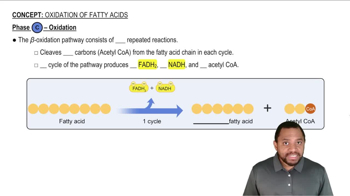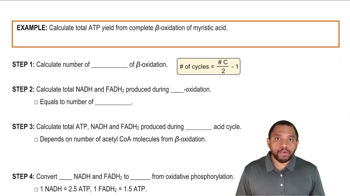Arachidic acid is a C20 fatty acid found in peanut and fish oils.
a. How many cycles of β oxidation are needed for the complete oxidation of arachidic acid?
 Verified step by step guidance
Verified step by step guidance Verified video answer for a similar problem:
Verified video answer for a similar problem:



 3:8m
3:8mMaster Total Energy from Fatty Acids Concept 1 with a bite sized video explanation from Jules
Start learning